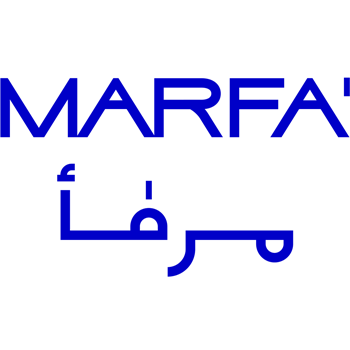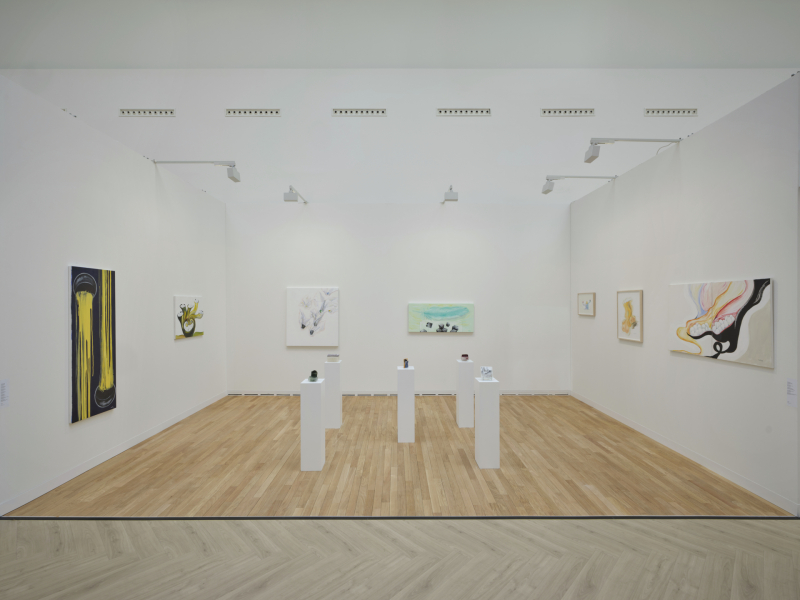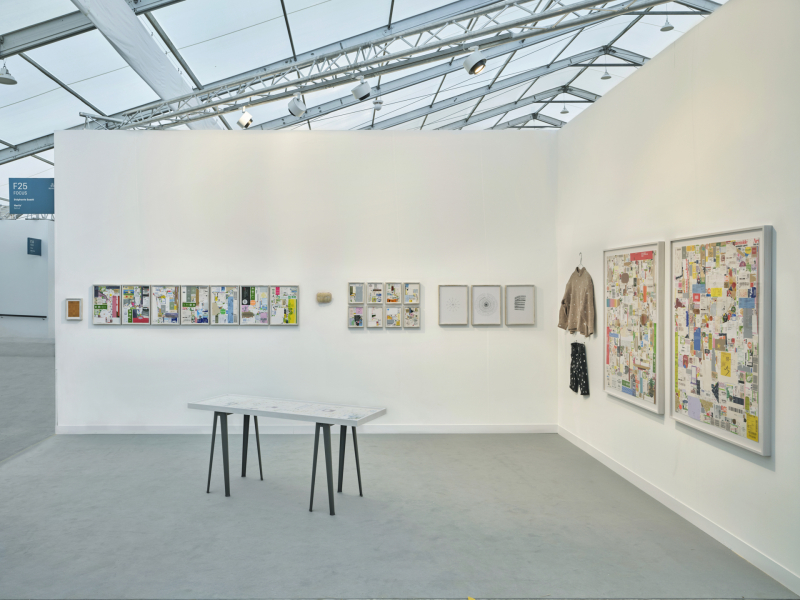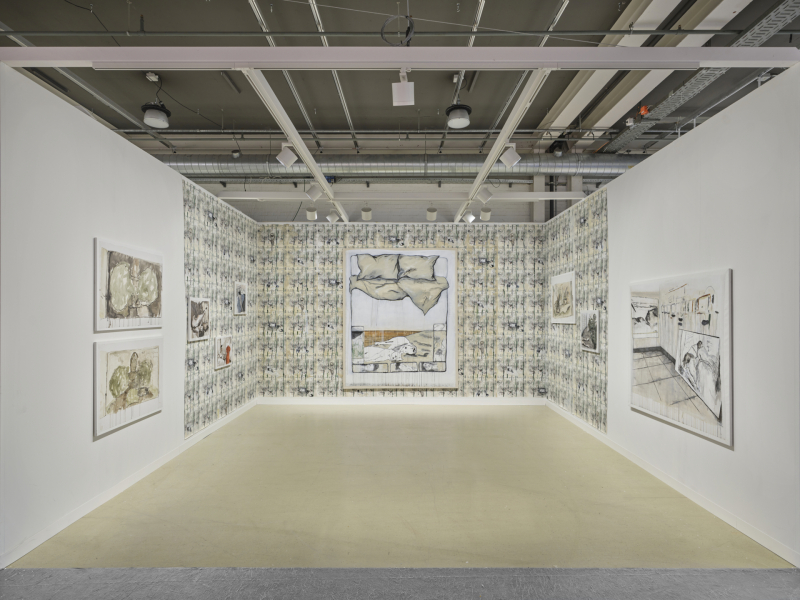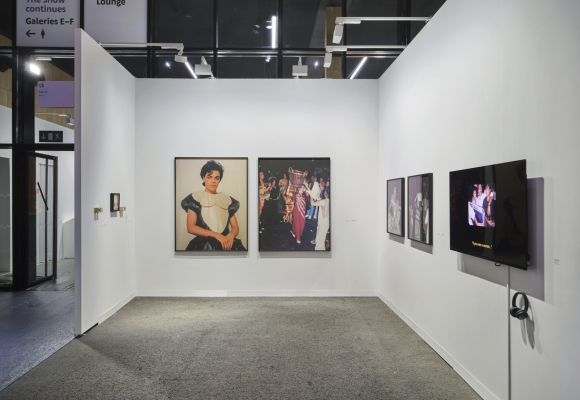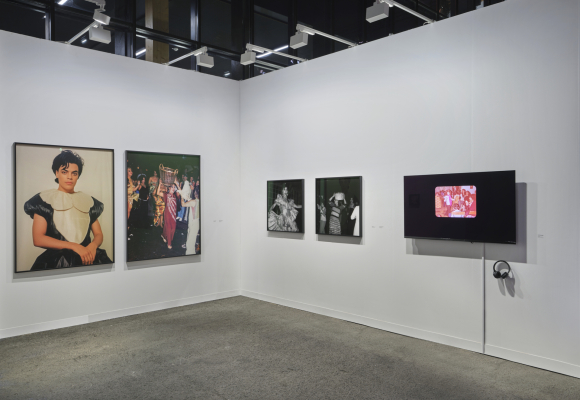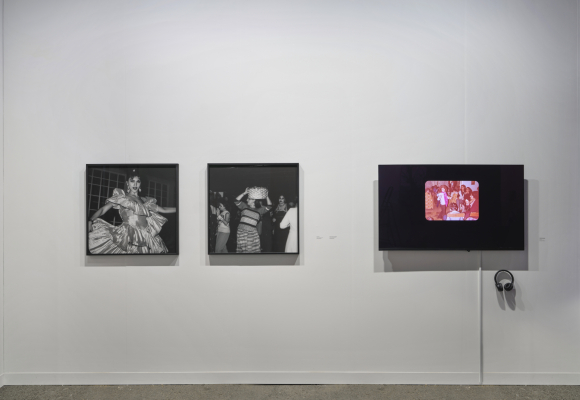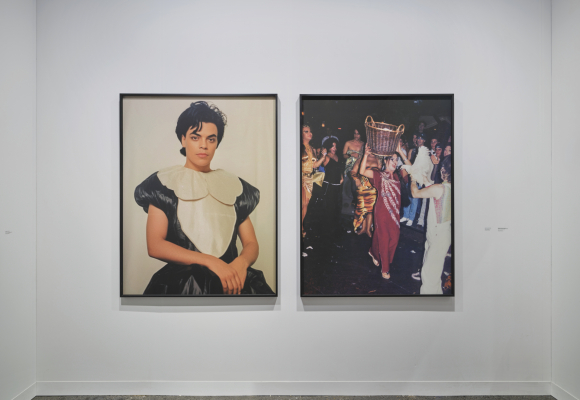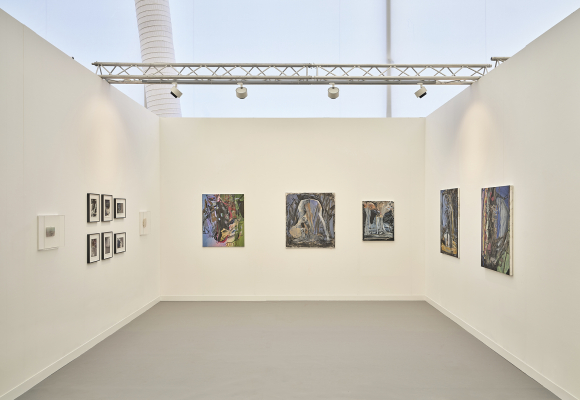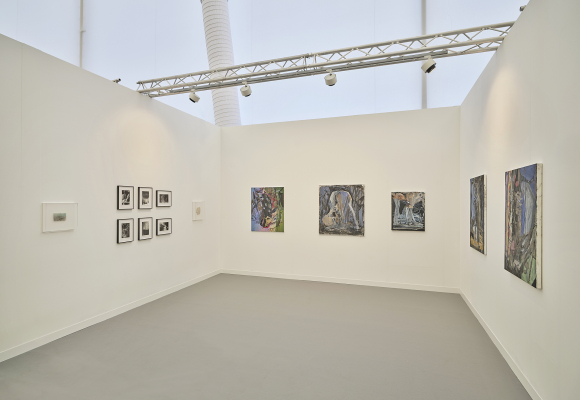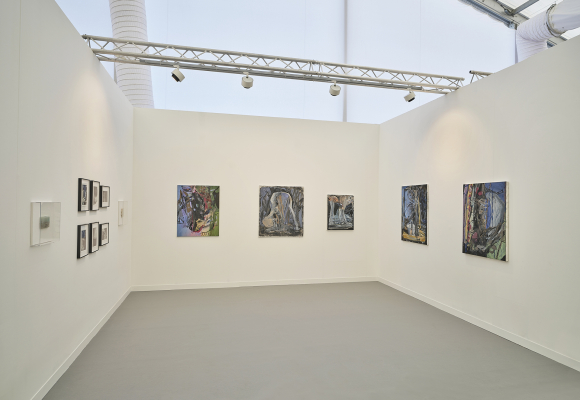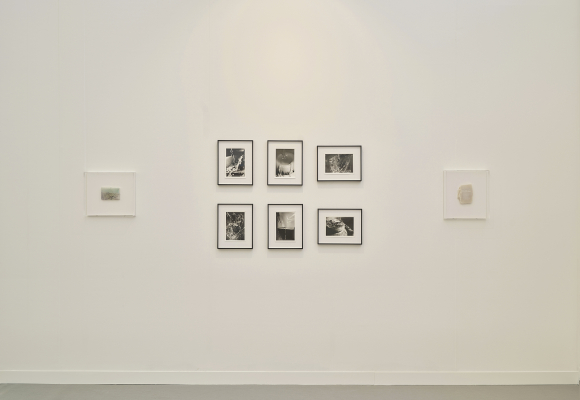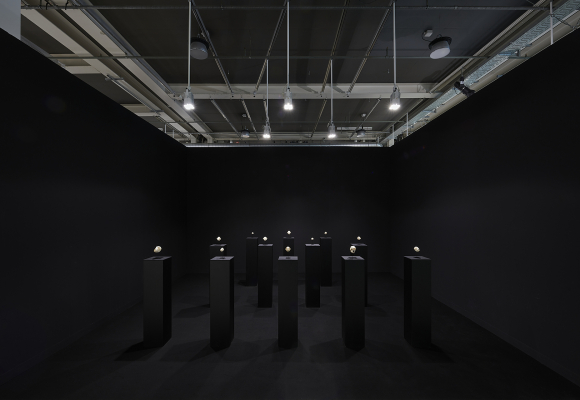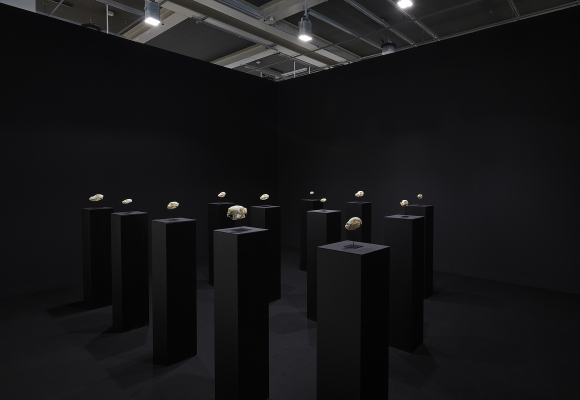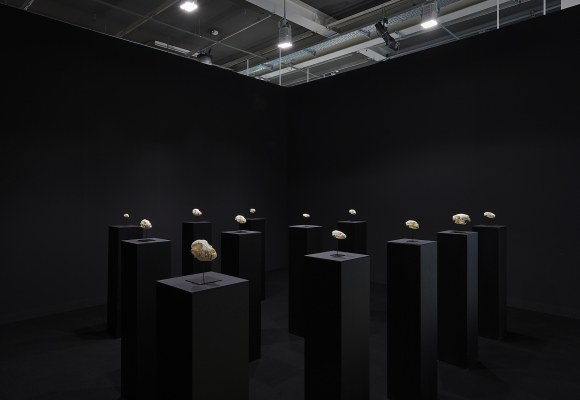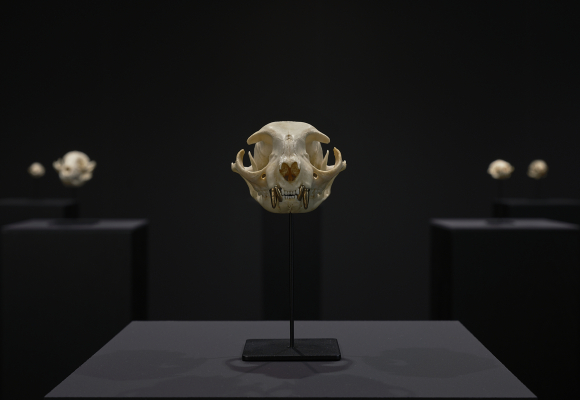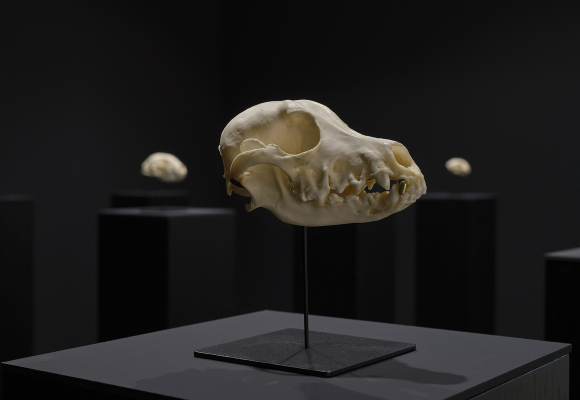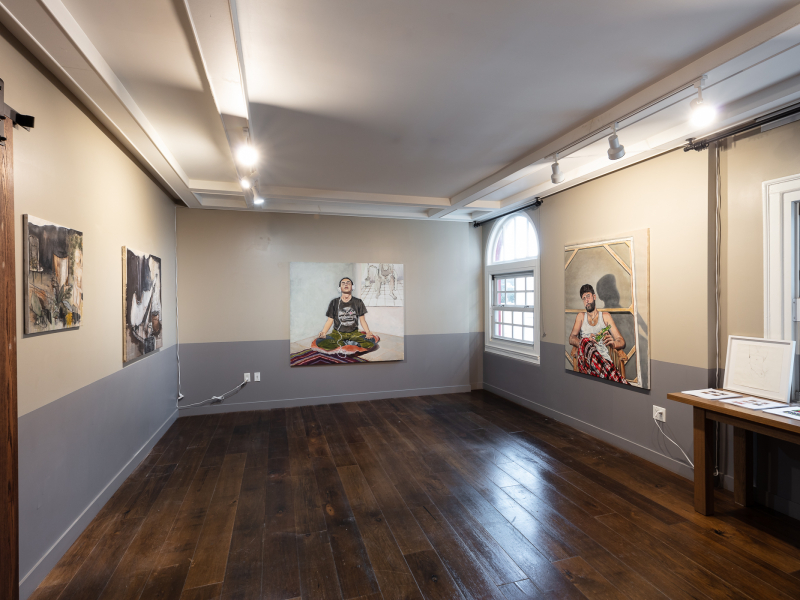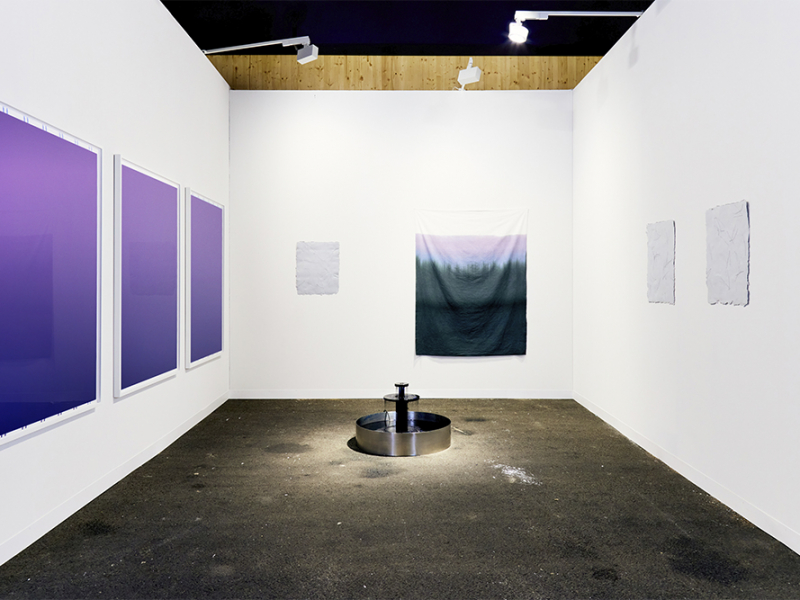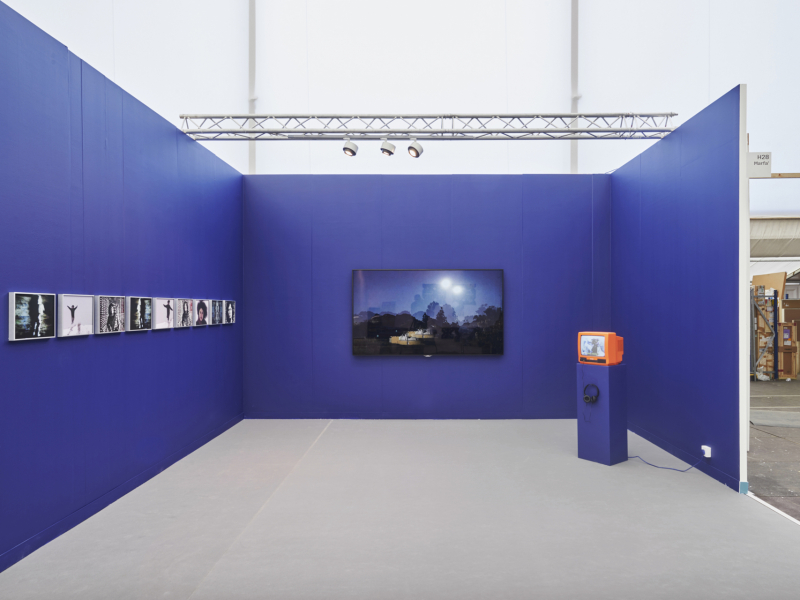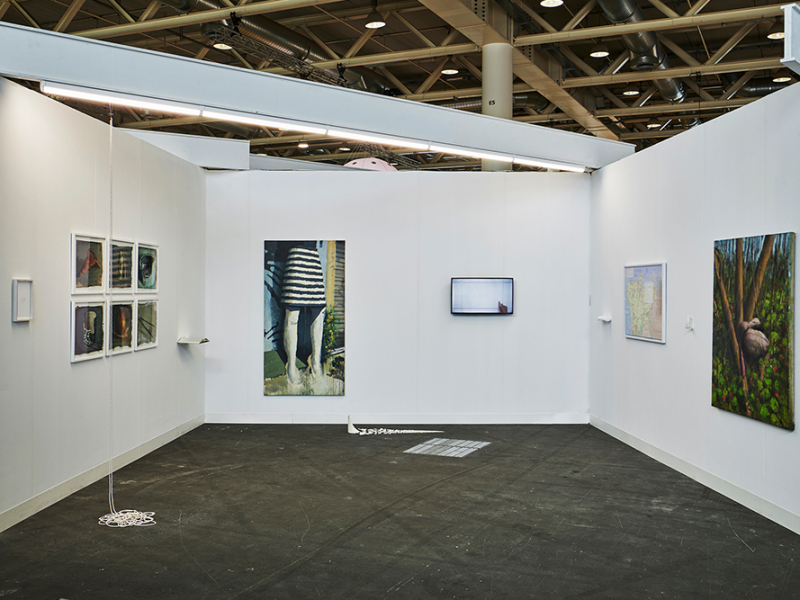For Art Basel Paris 2024, we will be showcasing paintings by artist Seta Manoukian and wax sculptures by Paola Yacoub .
Born in 1945 in Lebanon, Seta Manoukian since 2005 a practicing buddhist nun living and painting in Hollywood, Los Angeles, California.
Influential in the artistic landscape of 70s and 80s Beirut, Lebanese Armenian Seta Manoukian was a key figure in the burgeoning art scene of the time. Her work remains known to few due to her departure to the USA and a long period of complete devotion to her buddhist practice. Varying from the timelines of most spiritual women painters, her artistic practice preceded and spearheaded her spiritual awakening. At the start of her career and unbeknownst to her at the time, through her highly introspective and inquisitive approach to painting, she was practicing meditation. This presentation focuses primarily on her latest work, created after 2016 as it is important to show work that has rarely been seen, that is a culmination of her two spiritual practices going hand in hand.
Surrealism is coupled with traditional Zen buddhist painting. White takes center stage, intentionally covering most of the surface of the canvas where crude depictions of bodily fluids and fertility are juxtaposed in a dream-like meditative state.
What is usually considered a background becomes the central subject, it is as important as the image on the canvas. The white she uses is not angelical; is not just pure, is not just empty, the white she uses is all of it. For her, It is representative of all the containment of one’s inner spirit.
Manoukian’s work still retains humor and witty sensibility. She paints what she knows and what she sees around her. What is trivial to some takes on a truly ethereal aspect in her paintings. Rocks entangled in hair show infinite lightness while eggs overflow in a sort of spiritual fertility. Playing with symbolical meanings of verticals and horizontals, of lightness and weight, she flips gravity on its head as she’s done since the 70s, what is dark becomes light what is heavy floats.
Paola Yacoub’s works from the 90s are central to the understanding of the post-civil war Lebanese contemporary art landscape.
The works presented were produced between 1993 and 1994. These works involve the phase changes of liquids, in particular the transition from the liquid state to the solid state. Aquatic forms are too fleeting to be captured by the eye. They cannot be drawn. Photography allows us to capture them.
By solidifying, liquid wax, by analogy with water, freezes the movements that animate it. Here, it is the liquid that gives shape to the solids. Images of cities and elastic bands are immersed in the liquid wax, which mobilized their plasticity.
These transmutations from liquids to solids also engage a different perception of architecture.
Here, photographs of buildings by Le Corbusier and others are drowned in liquid wax. In this way, new volumes are created through these processes of morphogenesis.
Objects in movement are stopped in their track. While Seta’s paintings give a sort of ascension to levitating organic entities, Paola’s objects are instantaneously frozen and grounded.
But this stillness is not an end, the movement is not consummated, it’s has just defied gravity, it is in an airy state.
